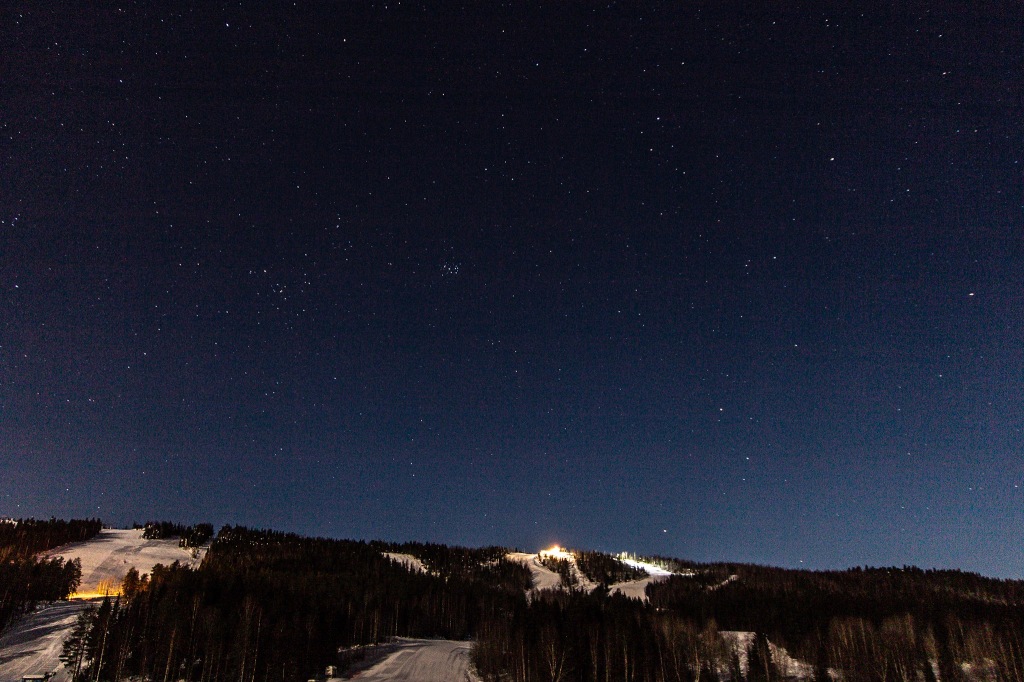Since a child, I’ve been a space nerd. Go and ask 14-year-old me about space and he could tell you a whole lot about black holes, quasars and quantum mechanics. Weirdly enough this interest in space did not extend to observing the actual night sky that much. Possibly this was because most of the time we’d lived near the center of town where light pollution ensured that the night sky didn’t look very interesting. Recently, though, this has changed, thanks to a growing interest in photography. Digital camera sensors can gather a whole lot more photons than the naked eye is able to perceive.
On our ski trip to Northern Savonia in February, we were lucky (I was lucky) to have a couple of really clear nights, and I managed to get this nice shot of the Pleiades above Tahko Ski Center.

Canon EOS 100D, Sigma 10-20mm @ 15mm, f/3.5, 15s, ISO 100
There’s a ridiculous amount of noise in the above photo. Partly this is because of the cropped-sensor camera I had, but mainly because I had no idea what I was doing, and took the photo with a very low ISO, resulting in a very underexposed image. Thanks to Alan Dyers’ excellent book How to Photograph and Process Nightscapes and Timelapses, I now know a little bit better. Things also got a little bit out of hand and I got myself a full-frame camera.
Stars and moonlight
The below photos were taken two nights ago near our home, about 1.5 hours after sunset, so there is still quite a lot of light on the horizon. It was also a full moon, which usually would be an annoyance for photographing the stars, but near town it helped block out most of the nasty orange glow of light pollution.

Canon 6D mkII, EF24-105mm f/3.5-5.6 IS STM @ 24mm, f/3.5, 6s, ISO 1600

Leave a comment